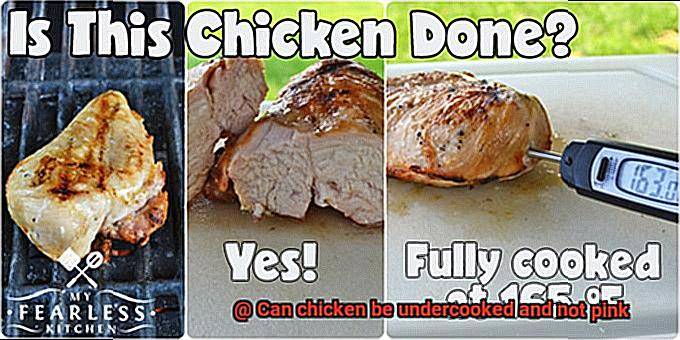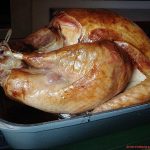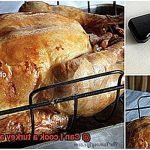Have you ever bitten into a piece of chicken that looked perfectly cooked on the outside, only to find out it’s still raw and pink inside? It’s a common kitchen mishap that can leave you wondering whether undercooked chicken can be not pink at the same time. The answer might surprise you.
Contrary to popular belief, pink chicken isn’t always a telltale sign of undercooked meat. In fact, chicken can be undercooked and not show any signs of pinkness, making it tricky to determine if your meal is safe to devour or not.
But how do you know if your chicken is underdone, even if it doesn’t look pink? Let’s explore the science behind cooking chicken, from how heat impacts the color of poultry meat to why it’s crucial to cook chicken thoroughly to avoid food poisoning.
In this post, we’ll delve into what makes chicken safe for consumption. We’ll cover everything from the recommended internal temperature for properly cooked poultry to the potential risks associated with consuming undercooked chicken. So take a seat and get ready to uncover all there is about the mysteries of undercooked but not-pink chicken – you won’t want to miss this.
Contents
The Dangers of Undercooked Chicken
Undercooked chicken is not just a culinary faux pas – it can have serious consequences for your health. When chicken is not cooked to the proper temperature, it can harbor harmful bacteria such as Salmonella, Campylobacter, and E. coli. These bacteria can cause foodborne illnesses that lead to symptoms like diarrhea, vomiting, fever, and abdominal cramps. In severe cases, these symptoms can last for days or even be life-threatening for those with weakened immune systems.
One common misconception is that undercooked chicken is only dangerous if it is pink in the center. However, relying solely on the color of the meat to determine if it is safe to eat is not recommended. The color of the meat can be influenced by various factors such as the bird’s age, diet, and cooking method used. Therefore, it is essential to use a meat thermometer to check the internal temperature of the chicken.
According to the USDA guidelines, chicken should be cooked to a minimum internal temperature of 165°F (74°C) to kill any bacteria that may be present. This temperature should be measured at the thickest part of the chicken, including any stuffing or filling. Different parts of the chicken may cook at different rates; therefore, checking the temperature of each piece individually is necessary.
Cutting into the chicken to check for doneness is not recommended as it can lead to cross-contamination and increase the risk of foodborne illness. Instead, use a meat thermometer inserted into the thickest part of the chicken to ensure it has reached the appropriate temperature.
Common Misconceptions about Chicken
Let’s dive into the misconceptions and set the record straight.
Misconception #1: Chicken must be cooked until it is no longer pink.
While it’s crucial to cook chicken thoroughly to eliminate harmful bacteria, the color of the meat is not a reliable indicator of its safety. Undercooked chicken can cause serious foodborne illnesses, so it’s important to use a meat thermometer and ensure that chicken reaches a minimum internal temperature of 165°F (74°C). Don’t be fooled by the lack of pink.
Misconception #2: Washing raw chicken before cooking it will remove any bacteria or germs.
This is a common misconception that could actually increase the risk of foodborne illness. Washing raw chicken can spread bacteria around your kitchen, making it essential to avoid washing it before cooking.
Misconception #3: Freezing chicken will kill any bacteria present in the meat.
While freezing can slow down the growth of bacteria, it doesn’t kill them completely. It’s still crucial to cook frozen chicken thoroughly before consuming it.
Misconception #4: Organic or free-range chicken is automatically safer or healthier than conventionally raised chicken.
While these labels indicate certain farming practices and standards, they don’t necessarily guarantee safety or nutritional value. It’s essential to handle and cook all types of chicken properly for optimal safety and quality.
How to Check the Internal Temperature of Chicken
When it comes to cooking chicken, it is essential to ensure that it is cooked thoroughly to avoid any risk of foodborne illness. Checking the internal temperature of the chicken is one way to guarantee its safety. Here are some tips on how to check the internal temperature of chicken.
Use a meat thermometer
A meat thermometer is a must-have when it comes to checking the internal temperature of chicken. Insert the thermometer into the thickest part of the chicken without touching any bones or fat. The temperature should be taken towards the end of the cooking time, and it is crucial to make sure that it reads at least 165°F (74°C) before removing the chicken from heat. This temperature ensures that any harmful bacteria, such as salmonella, are killed off.
Cut into the thickest part of the chicken
If you do not have a meat thermometer, you can cut into the thickest part of the chicken and look for any pink meat or clear juices. However, it is important to note that even if there is no pink meat, it does not necessarily mean that the chicken is fully cooked. It may still be undercooked on the inside, which can be dangerous. Therefore, using a meat thermometer is highly recommended.
Observe the juices
Another way to check if the chicken is fully cooked is by using a fork. Pierce the thickest part of the chicken with a fork and observe any juices that come out. If the juices are clear without any pink tinge, then it is fully cooked. However, if there are any pink juices present, then it needs further cooking.
Clean your thermometer
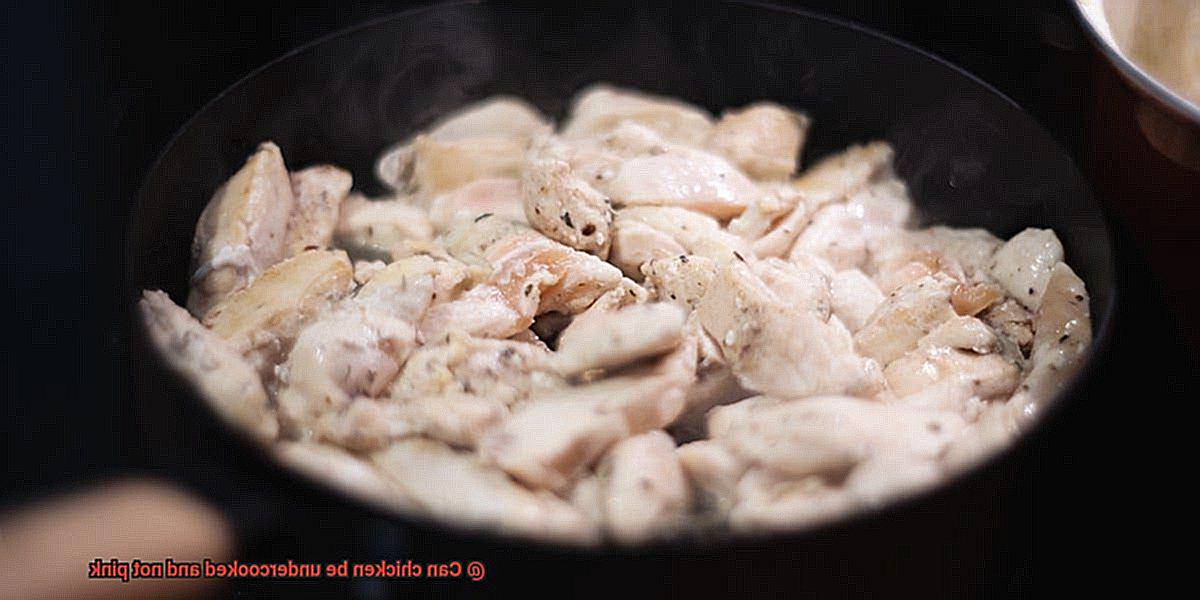
It is crucial to clean your meat thermometer before and after use to prevent cross-contamination and ensure that it remains accurate.
Different parts cook differently
Different parts of the chicken may cook at different rates due to their thickness or proximity to bones. For example, chicken breasts may cook faster than thighs or drumsticks. Therefore, it is necessary to check the temperature of each piece of chicken individually to ensure that it is cooked thoroughly.
Appearance can be deceiving
It is important to note that even if the chicken appears cooked on the outside, it may still be undercooked on the inside. This can be especially dangerous when grilling, as high heat can cause the outside of the chicken to cook quickly while leaving the inside raw. Therefore, using a meat thermometer is recommended for accuracy.
Different Parts of the Chicken Cook at Different Rates
Then you need to know that different parts of the chicken cook at different rates. The breast meat of a chicken cooks faster than the thighs or legs, which can lead to overcooked and dry breast meat if not cooked properly.
To avoid this common mistake, there are a few tips you should keep in mind. Firstly, use a meat thermometer to check the internal temperature of the chicken. The USDA recommends cooking all parts of the chicken to an internal temperature of 165°F (75°C). This is crucial to ensure that all parts of the chicken are cooked thoroughly and evenly.
Secondly, use indirect heat when grilling chicken. This means placing the chicken on a cooler part of the grill and cooking it slowly until it reaches the desired temperature. This allows the chicken to cook evenly without burning or drying out. It’s also important to remember that marinating chicken before grilling can help keep it moist and tender.
In addition, knowing how long each part of the chicken takes to cook can be helpful. Here’s a quick breakdown:
- Breast meat: 6-8 minutes per side
- Thighs: 10-12 minutes per side
- Legs: 12-15 minutes per side
By keeping these times in mind and using a meat thermometer, you can ensure that each part of the chicken is cooked perfectly without overcooking or undercooking any part.
What is the Recommended Internal Temperature for Chicken?
It’s not just about tossing it on the grill and hoping it comes out right. Cooks need to ensure that chicken is cooked to the proper internal temperature to avoid exposing themselves and their loved ones to harmful bacteria such as salmonella.
So, what is the recommended internal temperature for cooking chicken? The United States Department of Agriculture (USDA) recommends cooking chicken to a minimum internal temperature of 165°F (74°C) for at least 15 seconds. This temperature should be measured using a meat thermometer, inserted into the thickest part of the chicken, away from bones and fat.
It is crucial to follow this recommendation because consuming undercooked chicken can lead to foodborne illnesses such as salmonella. These illnesses can cause severe symptoms like diarrhea, vomiting, and fever. Such illnesses can be particularly dangerous for people with weakened immune systems, young children, pregnant women, and older adults.
It’s also important to note that the color of the chicken meat is not always an accurate indicator of doneness. Even if chicken appears cooked, it may not have reached the recommended internal temperature. For example, chicken may still be undercooked and not pink, particularly when cooked on a grill or under high heat.
To ensure that your chicken is safe to eat and free from harmful bacteria such as salmonella, always use a meat thermometer when cooking chicken. Insert it into the thickest part of the chicken away from bones and fat. Ensure that it has reached a safe internal temperature of 165°F (74°C) for at least 15 seconds.
How to Use a Meat Thermometer to Check Internal Temperature
Cooking chicken can be a daunting task, but using a meat thermometer to check its internal temperature can make it easier. This tool helps ensure that your chicken is fully cooked and safe to eat. Here are five sub-sections that will guide you on how to use a meat thermometer to check the internal temperature of your chicken.
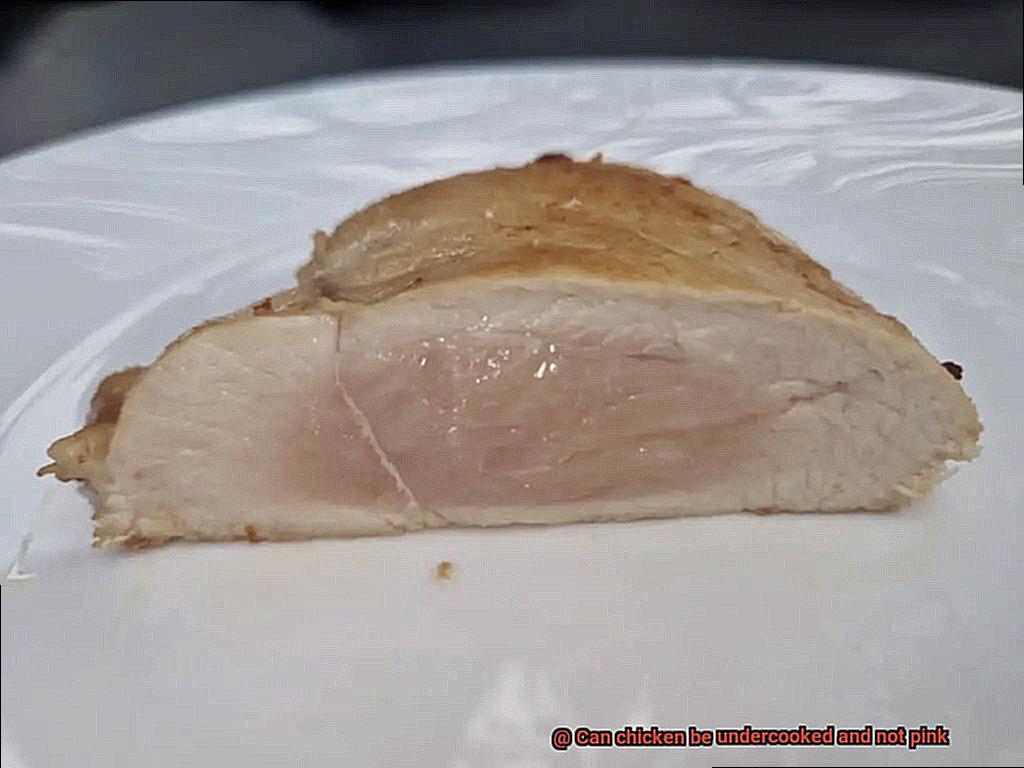
The Importance of Using a Meat Thermometer
To ensure that your chicken is safe to eat, it must be cooked to an internal temperature of 165°F (74°C). Using a meat thermometer is crucial in achieving this temperature accurately. It helps avoid undercooked or overcooked chicken, which can lead to food poisoning. By using a meat thermometer, you can get an accurate reading of the chicken’s internal temperature and adjust it accordingly.
Insert the Thermometer Correctly
Insert the thermometer into the thickest part of the chicken, making sure not to touch any bones or the pan. This ensures an accurate reading of the temperature. If you hit a bone or the pan, you’ll get an inaccurate reading that might lead you to believe that your chicken is fully cooked when it’s not.
Wait for the Temperature Reading to Stabilize
Once you’ve inserted the thermometer, wait for the temperature reading to stabilize. This can take up to 15 seconds but will give you an accurate reading. If you remove the thermometer too soon, you may get an incorrect reading.
Check the Temperature
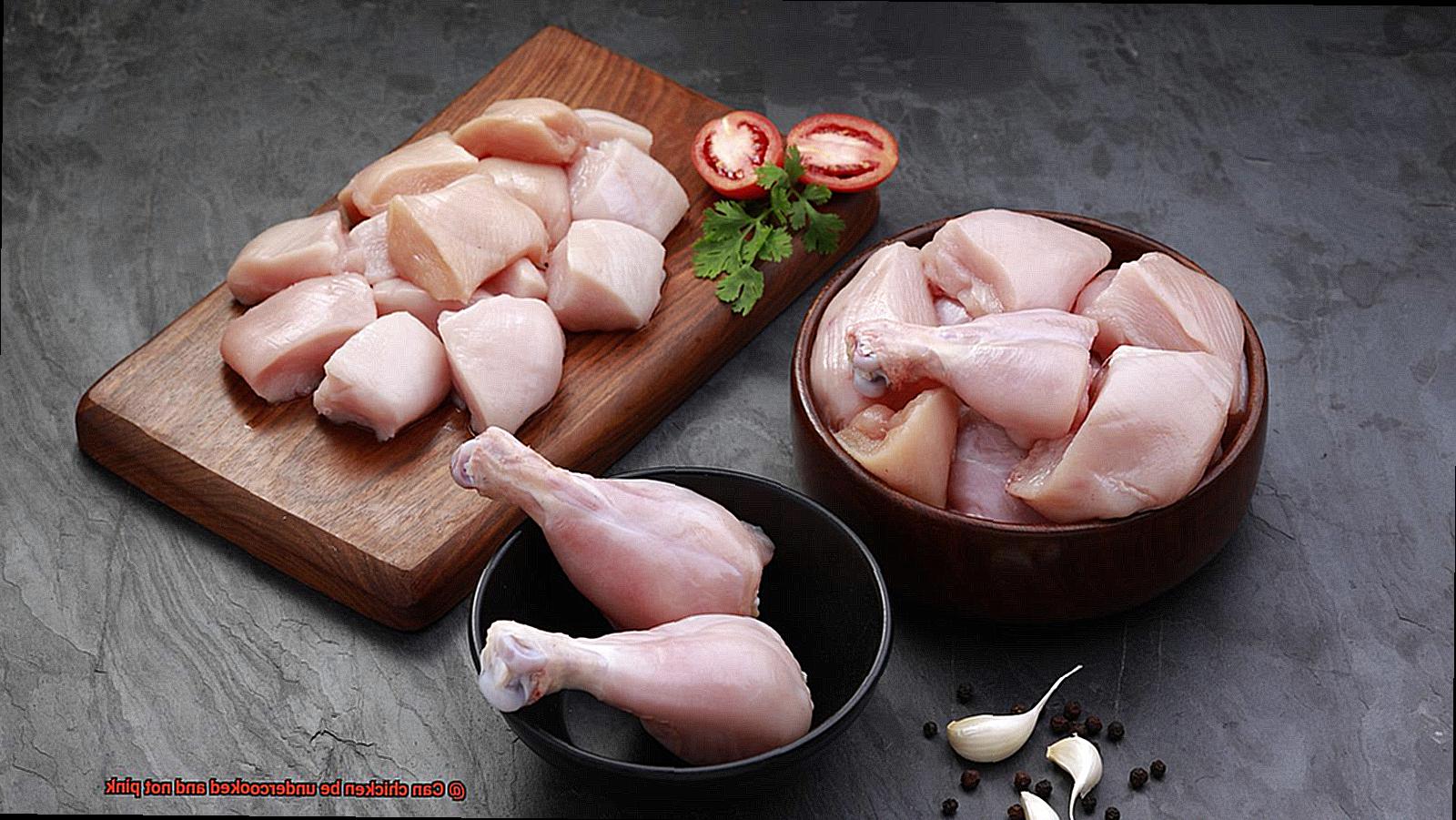
The recommended internal temperature for cooked chicken is 165°F (74°C). If the temperature reads below 165°F (74°C), continue cooking until it reaches that temperature. Different parts of the chicken may cook at different rates, so make sure to check each piece individually.
Visually Inspect the Chicken
Even if the thermometer reads 165°F (74°C), there may still be some pinkness in the chicken due to factors such as the age of the bird or even genetics. Therefore, it’s always best to visually inspect the chicken and make sure there is no pinkness or redness in the meat before consuming it. Cut into the thickest part of the chicken and check for any pinkness or redness.
Tips for Cooking Chicken Thoroughly and Safely
Cooking chicken is a great way to enjoy a healthy and delicious meal. However, it’s important to ensure that the chicken is cooked thoroughly and safely to avoid foodborne illnesses. Here are some essential tips for cooking chicken like a pro:
Use a Meat Thermometer
Using a meat thermometer is crucial for determining the internal temperature of the chicken. The recommended internal temperature for cooked chicken is 165°F (74°C). By using a meat thermometer, you can be sure that the chicken is safe to eat and free from harmful bacteria.
Defrost Properly
It’s important to defrost frozen chicken before cooking to ensure that it cooks evenly. Always thaw frozen chicken in the refrigerator or under cold water before cooking.
Handle Chicken Safely
Raw chicken can carry harmful bacteria, so it’s important to handle it safely. Wash your hands thoroughly before and after handling raw chicken, as well as any surfaces or utensils that come into contact with it. Avoid cross-contamination by keeping raw chicken separate from other foods.
Use Proper Cooking Methods
There are several cooking methods you can use for cooking chicken, including grilling, baking, and roasting. Ensure that the heat source is hot enough to cook the chicken thoroughly.
Let It Rest
Always let cooked chicken rest for a few minutes before cutting into it. This allows the juices to redistribute throughout the meat, resulting in a more flavorful and moist end product.
BFFGAEH-hA8″ >
Conclusion
To sum up, the question of whether chicken can be undercooked and not pink is a tricky one. Although pinkness in chicken is often associated with undercooked meat, it’s not always a reliable indicator of doneness. In fact, chicken can be underdone and still not show any signs of pinkness, making it difficult to determine if it’s safe to eat or not.
However, consuming undercooked chicken can have serious consequences for your health. Harmful bacteria like Salmonella, Campylobacter, and E. coli can lurk in uncooked poultry and cause food poisoning. This is why it’s crucial to cook chicken thoroughly to avoid any potential health risks.
To ensure that your chicken is cooked properly, you should use a meat thermometer to check the internal temperature of the meat. The recommended internal temperature for cooked chicken is 165°F (74°C). Additionally, different parts of the chicken may cook at different rates; therefore, checking each piece individually with a thermometer is necessary.
Other essential tips for cooking chicken safely include defrosting properly, handling raw chicken safely, using proper cooking methods such as baking or grilling, and letting the cooked chicken rest before cutting into it.
By following these guidelines and debunking common misconceptions about cooking chicken, you can enjoy a delicious and safe meal without worrying about getting sick from undercooked poultry.

